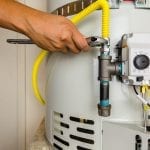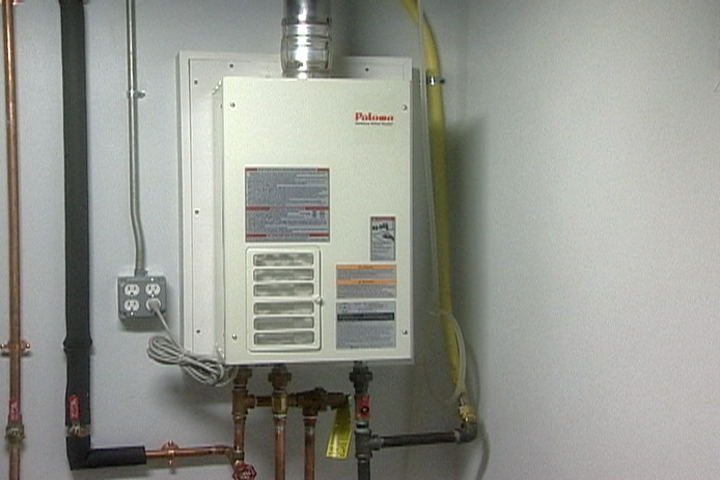What're your insights and beliefs on How to Maintain a Hot Water Heater in a Few Simple Steps?

Hot water is important for day-to-day convenience, whether it's for a revitalizing shower or cleaning meals. To ensure your warm water system runs efficiently and lasts longer, routine maintenance is essential. This short article gives functional ideas and understandings on how to preserve your home's warm water system to stay clear of disruptions and pricey fixings.
Introduction
Preserving your home's warm water system could appear difficult, but with a few basic actions, you can guarantee it runs efficiently for years to come. This guide covers everything from comprehending your warm water system to do it yourself maintenance suggestions and knowing when to call professional help.
Value of Keeping Your Warm Water System
Regular maintenance not just expands the lifespan of your warm water system yet additionally guarantees it runs efficiently. Overlooking maintenance can cause decreased efficiency, higher energy expenses, and even early failing of the system.
Indicators Your Warm Water System Needs Upkeep
Recognizing when your hot water system needs attention can prevent significant problems. Look out for signs such as inconsistent water temperature level, weird sounds from the heating unit, or rusty water.
Purging the Water Heater
Flushing your hot water heater gets rid of debris accumulation, enhancing efficiency and lengthening its life.
Monitoring and Changing Anode Rods
Anode rods avoid corrosion inside the container. Evaluating and changing them when worn out is essential.
Complex Concerns Needing Professional Help
Instances include major leakages, electrical troubles, or if your hot water heater is regularly underperforming.
Regular Professional Maintenance Advantages
Specialist maintenance can include thorough examinations, tune-ups, and guaranteeing compliance with security standards.
Evaluating and Readjusting Temperature Level Settings
Readjusting the temperature level settings guarantees ideal performance and security.
DIY Tips for Maintenance
You can execute a number of upkeep tasks on your own to keep your warm water system in top condition.
Looking for Leakages
Frequently inspect pipelines and connections for leaks, as these can result in water damages and greater expenses.
Recognizing Your Warm Water System
Before diving right into maintenance tasks, it's handy to comprehend the standard components of your warm water system. Generally, this consists of the water heater itself, pipelines, anode poles, and temperature controls.
Regular Monthly Upkeep Tasks
Routine month-to-month checks can assist catch small concerns before they rise.
Evaluating Stress Relief Valves
Examining the pressure relief valve guarantees it functions properly and prevents extreme stress buildup.
Protecting Pipelines
Insulating warm water pipelines reduces warm loss and can save power.
When to Call a Professional
While do it yourself upkeep is advantageous, some problems call for specialist competence.
Verdict
Routine upkeep of your home's warm water system is important for effectiveness, long life, and price savings. By following these suggestions and understanding when to seek professional help, you can guarantee a trustworthy supply of warm water without unanticipated disturbances.
How to Maintain an Instant Hot Water Heater
Before tinkering with your hot water heater, make sure that it’s not powered on. You also have to turn off the main circuit breaker and shut off the main gas line to prevent accidents. Also turn off the water valves connected to your unit to prevent water from flowing into and out of the appliance. 2. When you’re done, you have to detach the purge valves’ caps. These look like the letter “T” and are situated on either side of the water valves. Doing so will release any pressure that has accumulated inside the valves while at the same time avoid hot water from shooting out and burning your skin. 3. When the purge valves’ caps are removed, you have to connect your hosing lines to the valves. Your unit should have come with three hoses but if it didn’t, you can purchase these things from any hardware or home repair shops. You can also get them from retail stores that sell water heating systems. Read the user’s manual and follow it to complete this task properly. When the hosing lines are connected, open the purge port’s valves. 4. You should never use harsh chemical cleaners or solutions when cleaning your unit. Make use of white vinegar instead. It should be undiluted and you’ll probably use about 2 gallons. 5. Now flush your water heater. This task should probably take about 40 minutes. We can’t give you specific directions for this because the procedure is carried out depending on the type, model and brand of your heater. With that being said, refer to the user’s manual. 6. When you’re done draining the unit, you have to turn off the purge port valves again. Remove the hosing lines that you earlier installed on each of the water valves. Put the valve caps (purge port) back in their respective places and be very careful so as not to damage the rubber discs that are found inside these caps. 7. Now that everything’s back in place, check your user’s manual again to find out how to reactivate your water heating system. 8. Once it is working, turn one of your hot water faucets on just to let air pass through the heater’s water supply pipes. Leave the tap on until water flows smoothly out of it. https://www.orrplumbing.com/blog/2014/september/how-to-maintain-an-instant-hot-water-heater/

I ran across that content about Tips For Maintaining Your Hot Water Heater when doing a search on the search engines. If you enjoyed our blog posting please make sure you remember to pass it around. Thank you for your time. Come back soon.
Information